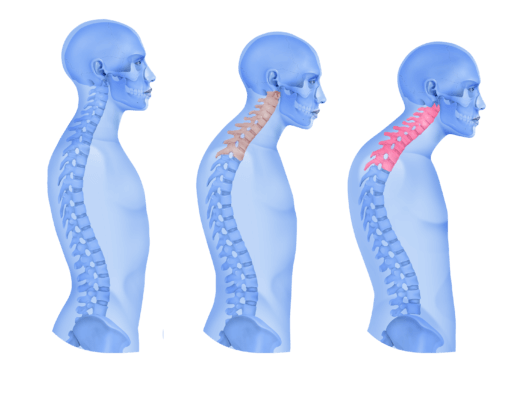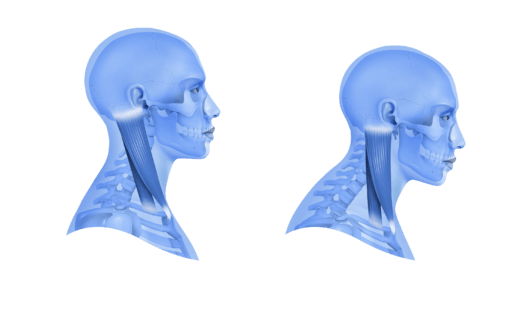We rarely think that poor posture can affect our occlusion and by extension, the appearance of our face.
Correct posture means that the body weight is correctly distributed and there is good body balance. When we do not maintain good posture, the body seeks to compensate and seek balance in various ways: throwing the head forward, tightening the buttocks, etc.

In the head, the resting position of the mandible is determined by muscular balance as a function of maintaining head posture, so head tilts affect mandibular postural position.
When we slouch (the posture we tend to adopt in front of screens) the head tilts forward and down to better see the screen, this means that extra pressure is put on the muscles of the neck, back, and the nerves that run through our neck, which make an overexertion to try to keep the chin up.

Holding this position or another abnormal position can lead to an excessive amount of tension on the muscles of mastication, teeth, and supporting structures, resulting in TMJ problems from abnormal pressure on the muscles of mastication.
In addition to possible TMJ disorders, poor posture can even change our bone structure.
The external shape and internal structure of living bone change with each alteration of function, i.e. a bone has the power to adapt to the load it has to bear, therefore this diminished position can lead to pathological bone resorption or to grind your teeth.
Orthognathic surgery can be a contributing factor in postural correction. Recent studies show that, 2.5 months after orthognathic surgery, frontal plane head orientation was improved, as the patient's external intercanthal lines came closer to the true horizontal line when various tests were performed.
Related content:
ATM: What treatments do we perform at the Maxillofacial Institute?








